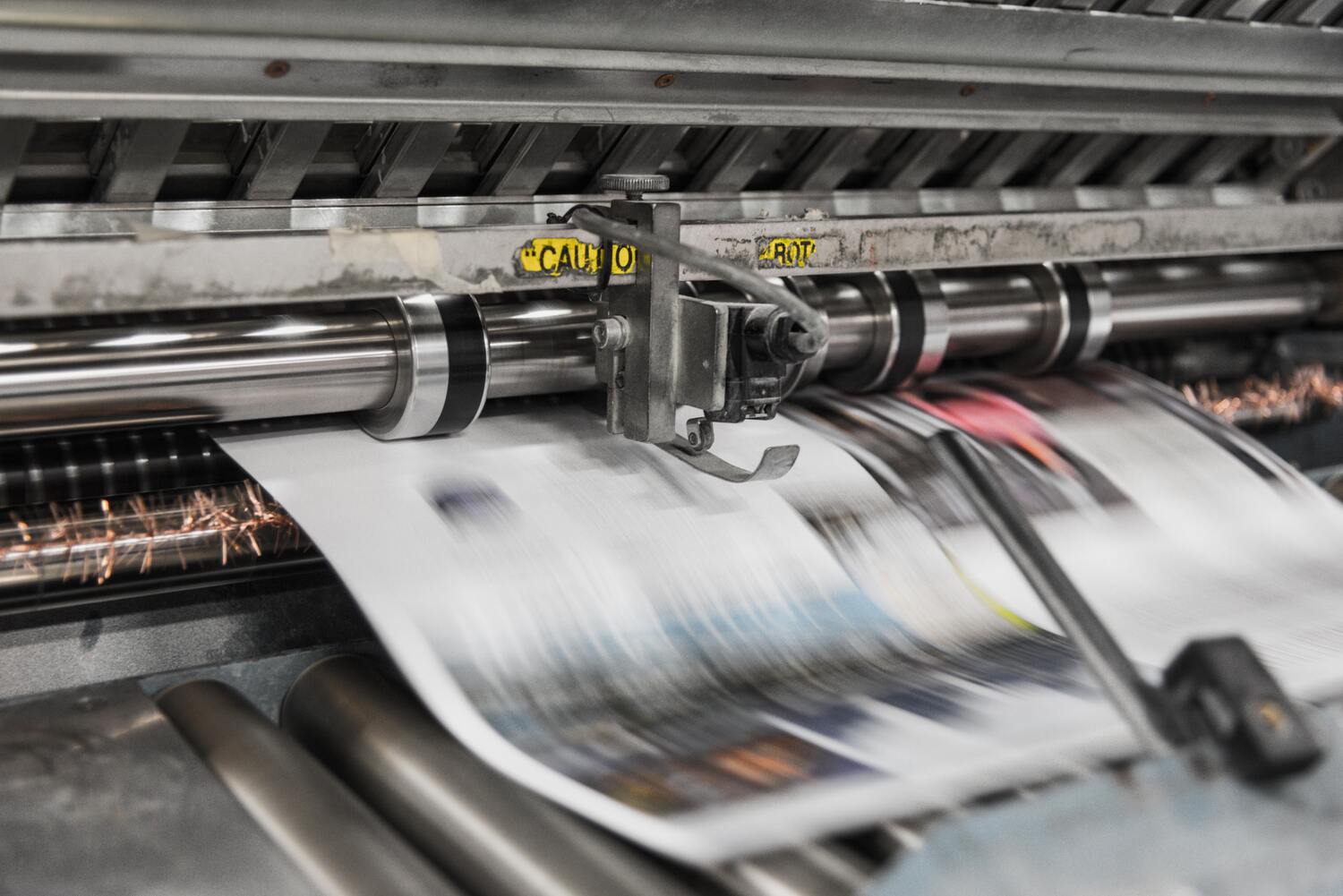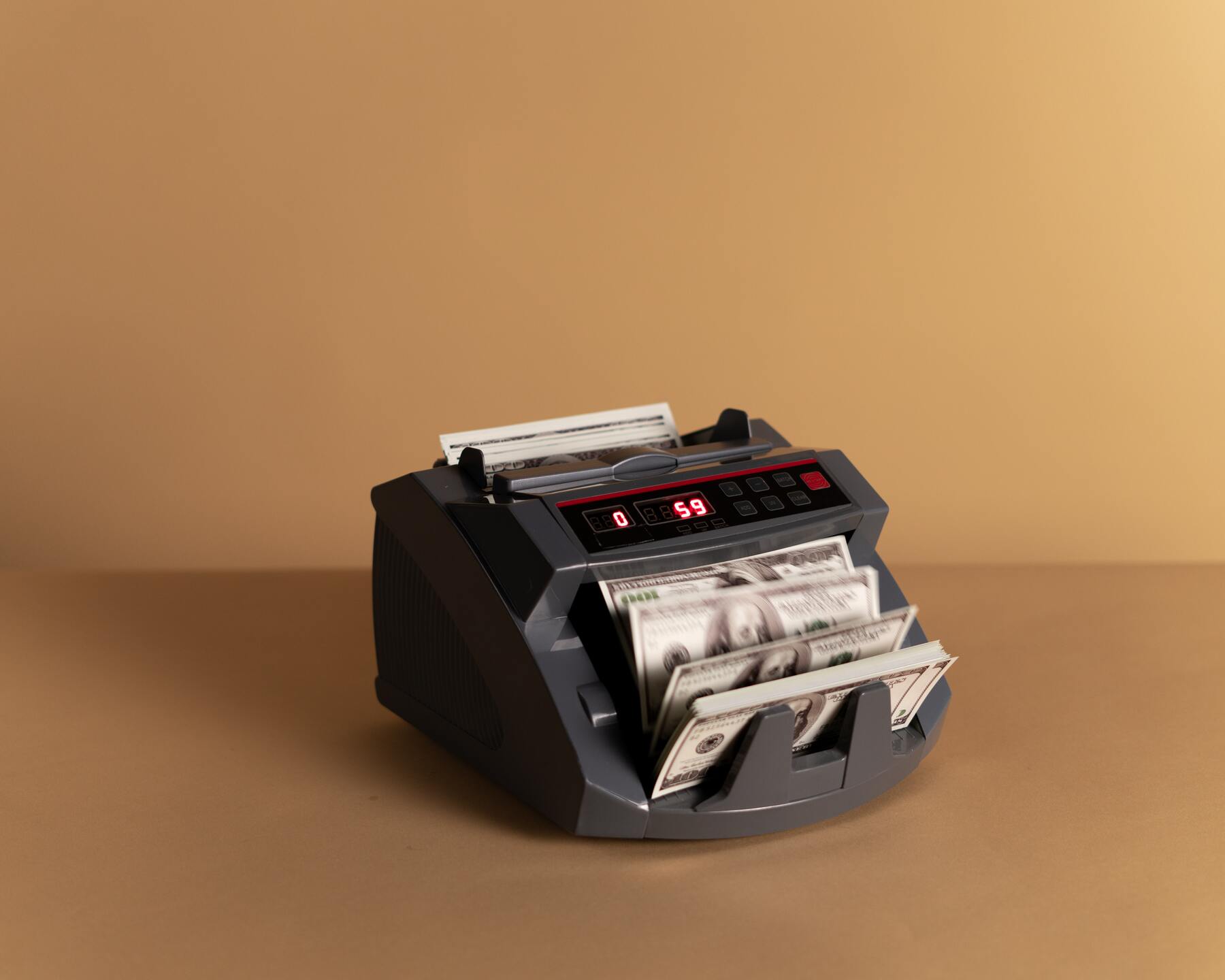
How To Make Professional Art Prints (Budget Friendly Guide)
Heads up: This post may contain affiliate links, Learn more.
Turn Your Artwork Into Prints To Sell Online Or In Person
If you have artwork to share, producing art prints can be an ideal way to give someone a piece of your creativity, and it doesn’t have to be expensive to do so.. Prints can also be a good introduction for any artist looking to sell profitable art independently without delving into the world of art collectors and commercial galleries.
In this guide, we’ll start by exploring why making art prints can be a good thing for your business; the different types of print, the equipment needed, and most importantly, how you can make art prints yourself.
But first, what’s the difference between art prints and original versions of a piece?
Prints vs originals:
Prints
An art print is a copy of an original piece, produced on a mass scale, offering budget friendly accessibility to the artwork. Its focus is purely on the enjoyment of the art itself.
Originals
Whereas an original is a one off piece, holding a higher monetary value, purchased with investment and profit in mind by galleries, museums and art collectors alike.
Not every artist sells prints, it all depends on the business focus of the individual. Some artists choose to only sell one or the other (originals or prints), with the most successful artists operating by selling both. This is because their original artwork holds so much value that reproducing lower budget print versions of the work can’t affect the value of the original. Even if there are 100 copies of the work, it is still a worthwhile investment for someone (with a lot of money) to buy their original work.
Why might an artist want to sell art prints?
You may have your own, individual reasonings behind wanting to make art prints, but here are some recurring facts that you may want to consider if you’re sitting on the fence.
It doesn’t require having to ‘let go’ of original work
We get it, we’re artists too. Sometimes, giving away that painting that you spent months working on feels a little bit too painful. So what can you do when people want to own the artwork for themselves? Make prints of it.
Increase accessibility for your audience regardless of their budget
By making art prints, you’re widening the accessibility that people have to your art. Some people may not have the funds to buy an original piece by an artist they love, so the print offers another way they can own a piece of their creativity whilst still supporting the artist who made it.
A fairly easy way of sharing your work and making money from it
As we’ll explain below, the process of making prints isn’t too difficult to do, and can be a straightforward way of earning some income off the back of your practice.
Take advantage of a huge art print market
Art prints are very popular.A surge in art prices and ‘Pinterest’ home inspiration has made us all the more inclined to decorate our plain white walls with pretty prints. If you’re a creative of any kind, you might want to jump on this trend while it’s hot.
It makes sense if you have a large target audience
A large target audience means a larger number of people who may be interested in buying an art print. The more people willing to buy your prints, the profitable your art business will be.
To start up an online business, on Etsy for example
Art prints are a great art market product, but they also tend to do really well for online sops too. So if you already have a shop up and running or have always dreamt of a little Etsy shop, art prints may be a great step forward for you.
Common types of art prints
Fine Art Prints
Giclée, which means a high quality print, are produced on a modern, large format inkjet printer using ‘archival’ ink and paper surface.
Traditional
These are typically chromogenic prints, which are made in a lab using light sensitive photo paper and then chemically developed. They are most commonly used for photography type prints.
Should art prints be glossy or matte?
With most creative projects, there really aren’t any rules. But if you’re looking for recommendations, we’d say that because art prints are typically meant to mimic your original piece, so a Giclée art print should be matte and whereas photographic prints are usually glossy. This is because you would usually opt for photo paper for photographs and other specialised printing paper for art prints that typically do not carry any gloss properties.
Can you make prints at home?
The simple answer is yes. To make your prints, you will need to consider one of two ways, either at home yourself, or outsourcing using a print company.
But before this, you will need to digitise your artwork.
How to digitise your artwork
Digitising you artwork is the first step in turning your art into prints, no matter what printing method you decide to go with:
1. Firstly, use a good quality scanner to capture a digital copy of your art
If the piece is too large to fit on the scanner in one go, try using one that has a flip lid so you can scan it in sections. Or you could also employ a photographer/print shop to scan the art for you instead. The most important thing is that the image quality is high, otherwise the art print will be doomed from the beginning, resulting in blurry and unclear prints.
2. Fix & edit your scanned image
In a photo editing program like Adobe Photoshop, edit, resize, fix the colours, brighten the whites, remove blemishes and crop off the edges of your digital art. This is also where you would connect the sections of scans for larger art pieces.
3. Set a high resolution for printing
Make sure you’ve set the resolution, which for printing has a standard of 300dpi minimum. This is very important if you want your art to print with the best quality. Now is also a good time to consider the best size for your art print.
Printing art at home
Now we’re onto the actual printing stage. This at home method may seem like the easier and cheaper alternative, but that does all depend on what equipment you already have/are willing to buy.
Can you make art prints on a regular printer?
Unfortunately, if you want to achieve a high quality Giclee art print, your regular office printer isn’t going to do the job. Not to panic! If you’re set on doing this from home, we’ve made a list of suitable printers that can carry out any art print task.
Essentially, you’re looking for a large format, high quality printer that can take pigment based type of inks rather than the standard inkjet printers that take dye-based solutions.
Best printer-scanners for artwork
Below is a collection of some printers that can carry out the job of making high quality prints. With prices varying depending on retailer, it’s best to do some research and shop around if you want a deal.
– Epson Expression ET-7750 EcoTank Printer – ★★★★☆ ( 4 From ExpertReviews)
– Expression Photo HD XP-15000 Printer – ★★★★★ ( 5 From ExpertReviews)
– Canon PIXMA PRO-200 Wireless Printer – ★★★★★ ( 5 From ExpertReviews)
– Epson SureColor P800 Inkjet Printer – ★★★★☆ ( 4 From PcMag)
– HP ENVY Photo 7855 All-in-One Printer – ★★★☆☆ ( 3.5 From PcMag)
– Canon imagePROGRAF PRO-1000 – ★★★★☆ ( 4 From PcMag)

– HP DesignJet Studio Large Format Plotter Printer – ★★★★★ ( 5 From ITPro)

What kind of paper are art prints printed on?
The quality of paper that you use for your art prints is one of the most important decisions you will make, in regards to the world of art prints. For this type of printing, you will want to opt for ‘archival paper’, e.g canvas, watercolour paper, specialist printing paper and more.
What GSM should art prints be printed on?
GSM simply stands for Grams per Square Metre, indicating the thickness and weight of the paper in question. When deciding, you will need to consider the maximum GSM that your printer allows (if printing from home). For art prints, you want a fairly sturdy paper, no less than 150 GSM. Even that weight could possibly be too light, as most archival type papers tend to fall between 200-300 gsm. It all depends on your printer and budget capabilities.
 – [Image description and text: A ‘Making Art Prints At Home’ pros and cons list]
– [Image description and text: A ‘Making Art Prints At Home’ pros and cons list]
PROS
- If making art prints is a long-term plan, buying the home equipment is a good investment.
- Easy and completely do-able from home once you know how.
- By doing it yourself, you will have more control over the process and outcomes.
- You have no minimum spend or order, can make as little or as many as you like.
CONS
- The equipment, especially the printer and scanner, can be costly when getting started.
- Might end up taking a lot of trial and error when perfecting the highest quality.
- Will require a lot of the work to be done yourself.
- Making prints yourself might eat into the time you usually used for other activities, like making art.
Making prints with a printing company
If the above methods would take up too much money and time as an artist, there’s always the choice of going through an external printing company, whether that’s a print-on-demand type of service or having them sent to you to then ship on to customers.
Print-On-Demand services
Print-on-demand companies allow you to upload a digital copy of your artwork, where the customer can then pick from a variety of products to have the work printed onto. Once the item is physically made, it is shipped out to your customer without you ever having to do anything. This is probably the easiest and most hassle free method of making art prints.
Getting started with these services are usually pretty easy (and free), take Printful for example. Their process is as simple as signing up, uploading your artwork, deciding on the markup price, making a sale and then the printing and delivery is taken care of for you.
So is print-on-demand services a foolproof way of making art prints? Not necessarily. If the agenda behind knowing how to make art prints is to earn more money, you might want to consider that many of these services don’t pay their artists a whole lot of profit. This means, if you want to make any kind of significant money from your art prints whilst also having competitive prices, you’ll have to sell a lot. It can be done, but it’s not guaranteed.
Print-on-demand services you might want to try:
– Gelato
– Society6
– Zazzle
– Printful
– ThePrintSpace (requires you to have an external online shop that it can connect to)
Outsourcing printing and ship yourself
Another popular option is to get an external company to handle the printing of your art and leave the rest to you. This way, you can market the prints on your own accord, set the pricing (taking into consideration the cost of printing and shipping) and ship to your customers yourself. Although you’re not directly making the art print, you’re still able to have a relationship with your customers and personify the experience of them shopping with you. Plus, you get to check the quality of the prints before they are sent off!
Sites that offer printing services:
– Printed.com, offering high quality fine art giclee prints that you can customise order quantity, paper type and the print finish. They also have other paper printing services available, like leaflets, business cards and calendars.
– mixam.co.uk, a printing service with an instant online quote service and fast delivery. They also have a lot of print options, including the choice of recycled paper.
– SimLab, offering fine art giclee prints printed on their archival Epson inkjet machines, with the option of bespoke sizing available.
– theprintspace.co.uk, claiming to be the UK’s first fine art printing carbon neutral service, they offer high quality prints that are recommended by professionals. They can also offer a print-on-demand service which will deliver the prints straight to your customer.
– Photobox, although it’s mainly advertised for photo printing, Photobox could also offer an option for your art print needs.

– [Image description and text: An ‘Outsourcing Art Prints” pros and cons list]
PROS
- Takes the hassle away from you and you don’t need to buy/learn special equipment.
- You’re guaranteed good, professional quality without trial and error.
- Print-on-demand services even cover your shipping for you.
- A lot of companies offer additional products like t-shirts, mugs, tote bags, etc!
- Can offer your customers a wide variety of paper types, sizes and finishes without buying all the resources yourself.
CONS
- It can work out more expensive over a long period of time, especially factoring in shipping and the cut that the company takes.
- Less control over the production and materials that they source.
- Some companies require bulk-buying.
- Less control over how and when you’re paid (print-demand-services).
- Additional, unexpected fees (set up, tax, shipping, processing fees, etc).
- Print-on-demand services sometimes pay their artists poorly.
Selling art prints
So you’ve made your art prints and decided how to ship them; your next task is to make sales. Luckily, you don’t need to have a big social following before launching your work (although your social media activity will always help). Selling art prints on marketplaces requires you to implement SEO into your listings to attract buyers who wouldn’t have seen your work otherwise. The
How should I be pricing prints?
With everything you make and sell, you need to consider multiple aspects when pricing to make sure you’re left with a profit. Prints tend to fall on the cheaper, accessible end of the budget when it comes to art, so don’t be pricing your prints like they’re originals. This will also take away the value of originals if you’re not careful. Factor in your production costs, time, shipping and packaging. If you’re using print-on-demand services, it’s likely they’ll be taking a percentage of your profits so be aware of this too. If in doubt, follow some simple pricing formulas to get a rough idea of how much you should be charging for your art prints.
How do I copyright my work?
When making art prints and figuring out your way of selling them to the public, you may want to consider ways of protecting your work through copyright. Copyright in the UK is automatically applied when you create an original piece of something like: writing, art, illustration, photography, sound and music, software and so on. However, creating a piece of work doesn’t prevent someone from copying your art, so there are additional things you can do to protect your images.
For instance, you could try adding a copyright notice to the bottom of your webpage or photo, to remind people that the work is protected. There is also the option of disabling the right-click function so viewers cannot save the image to their device. To go one step further, you could also consider adding a watermark on the image. Sites like Redbubble place their own watermark over the preview of your print for you, so it cannot be copied and printed elsewhere.
Enjoy the world of art prints!
However you decide to go about the making of your art prints, just make sure you take care and pride in how the finished result will look, especially when selling your artwork online. You want to art print to represent your creativity in the best way, and that is done through a high quality print. You will also want to use your time and money in the most efficient way, so prepare for a lot of research before diving into buying that expensive printer or 100’s of printed copies. With these tips, and things to consider we’re sure you’ll see your artwork hanging on the walls of many homes soon.
How do you make art prints at home? Comment down below and let us know!
Also, don’t forget you can always share your art with us! Become the next Artist of The Month or tag us on Instagram @darkyellowdot.
Thank you for reading and if you found this article useful, share it around, that makes us happy. To receive more posts like this and updates, join our mailing list, everyone is welcome.
NEED MORE ADVICE?
SITES TO HELP:
UK GOV: How Copyright Protects Your Work
ARTICLES TO HELP:
Londons Best Picture Framing Services
Is Selling Your Art On Society6 Still Worth It?
12 Tips For Selling Your Art Online
COURSES TO HELP:
Making A Living Through Print On Demand
Why Freelancers Should Create Their Own Product Line
Practical Fine Art Inkjet Printing

4 Comments
-
John
Good article, thank you!
-
Christi Jacobs
Very nice article! Thank you for being so informative, without hype, ads and junk I didn't want.
-












Nancy
I'm new to printing my artwork and have lots of questions. This has been extremely helpful in clearing up some of those questions. Thank you!